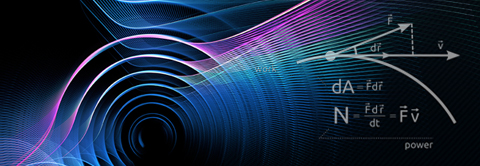(CAPP/IBS)Searching for Dark Matter with a Superconducting Qubit , Cryogenic Microwave Circuit Development at the NSTU
2020.09.22 16:20
| 날짜 | 2020-09-24 09:00 |
|---|---|
| 연사 | |
| 장소 | Zoom Video |
Speaker: Akash V. Dixit (University of Chicago)
Date: September 24, 2020 (Thursday)
Time: 9:00 AM
Venue: Zoom Video Conference System (Please click the link below)
https://kaist.zoom.us/j/6108068959?pwd=TXV2OGlWdVRtcGhmNXVTRWlla2pHQT09
Meeting ID: 610 806 8959
Passcode: 131015
Topic: Searching for Dark Matter with a Superconducting Qubit
Abstract:
The gravitational evidence for the existence of dark matter is extensive 1 , yet thus far, dark matter has evaded direct detection in terrestrial experiments. Detection mechanisms for low mass dark matter candidates such as the axion 2–5 or hidden photon 6,7 leverage potential interactions with electromagnetic fields, whereby the dark matter (of unknown mass) on rare occasion converts into a single photon 8,7. Current dark matter searches operating at microwave frequencies, use a resonant cavity to coherently accumulate the field sourced by the dark matter and use a quantum limited linear amplifier to read out the cavity signal 9–12. Here, we report the development of a novel microwave photon counting technique and use it to set a new exclusion limit on hidden photon dark matter. We constrain the kinetic mixing angle to ≤ 1.82 × 10−15 in a narrow band around 6.011 GHz (24.86 µeV) with an integration time of 8.33 s. We operate a superconducting qubit to make repeated quantum non-demolition measurements of cavity photons and apply a hidden Markov model analysis to reduce the noise to 15.7 dB below the quantum limit, with performance limited by the residual population of the system. The techniques presented here will dramatically improve the sensitivity of future dark matter searches in the range of 3-30 GHz and are generally applicable to measurements that require high sensitivity to inherently low signal photon rates.
Seminar Invitation (September 24, 2020), 4 PM
Speaker: Dr. Boris Ivanov (Novosibirsk State Technical University)
Date: September 24, 2020 (Thursday)
Time: 4:00 PM
Venue: Webinar Video Conference System (Please click the link below)
Seminar Name: Cryogenic Microwave Circuit Development at the NSTU
Password: None
Topic: Cryogenic Microwave Circuit Development at the NSTU
Abstract:
During the seminar I am going to show the last scientific results of 4 research performed in the Laboratory of Quantum and Cryogenic Electronics. I will concentrate the major part of the talk around cryogenic amplifiers design, development and characterization. Thus, the cryogenic low noise amplifier with the noise temperature of 6 K and gain value of more than 30 dB is shown for the frequency range from 6 to 12 GHz. Based on such microwave amplifiers the superconducting X-mon qubit structures were measured. The experiments with qubits were performed at continues microwave field and with short microwave pulses. The qubit energy spectrums were obtained and based on the AC-Stark experiment the low average photon number close to single photon mode in qubit-resonator structure was obtained. From the other side for the bolometer circuits readout and Josephson junctions measurements the low frequency cryogenic amplifiers were designed and characterized. The minimum voltage noise density corresponds to 150 pV/root(Hz) with the gain value of more than 60 dB for the presented amplifiers.







